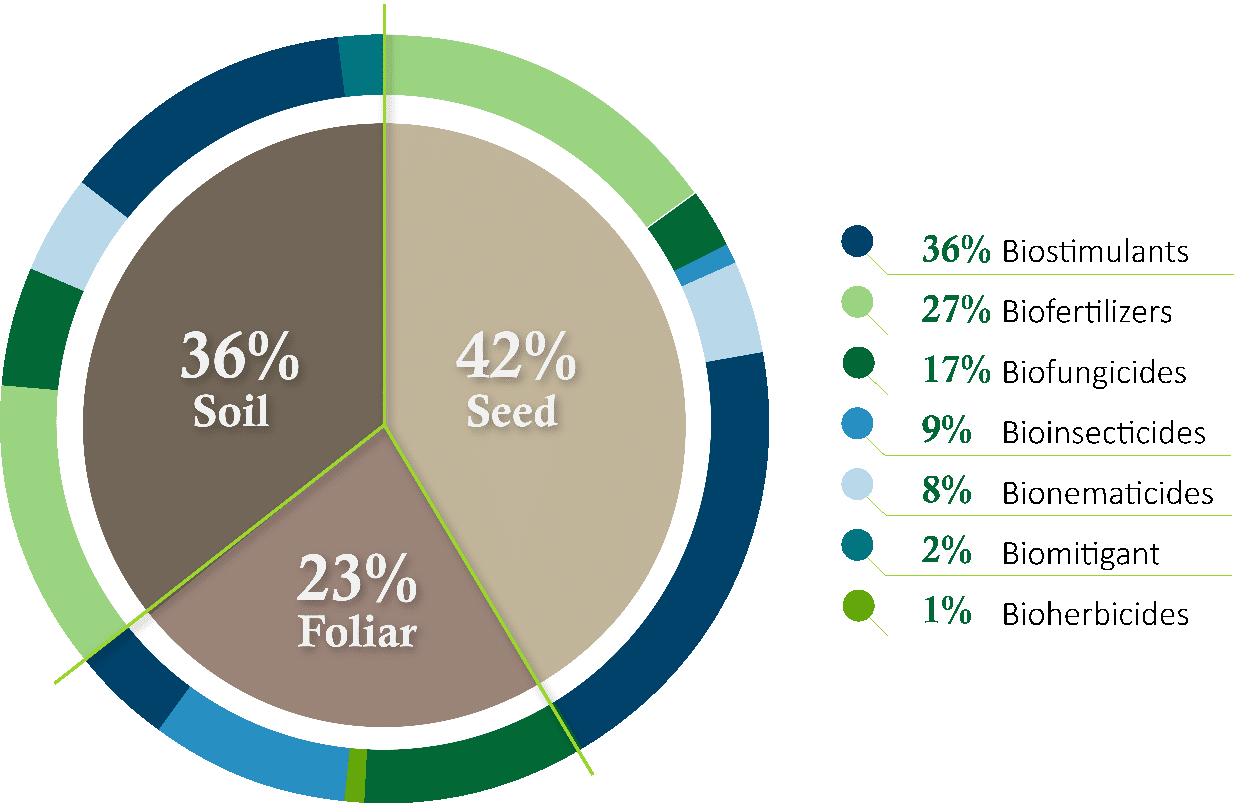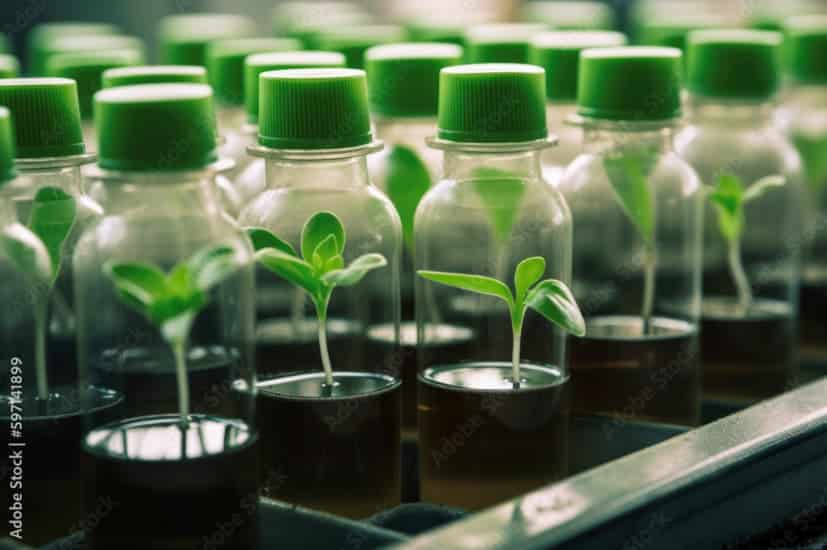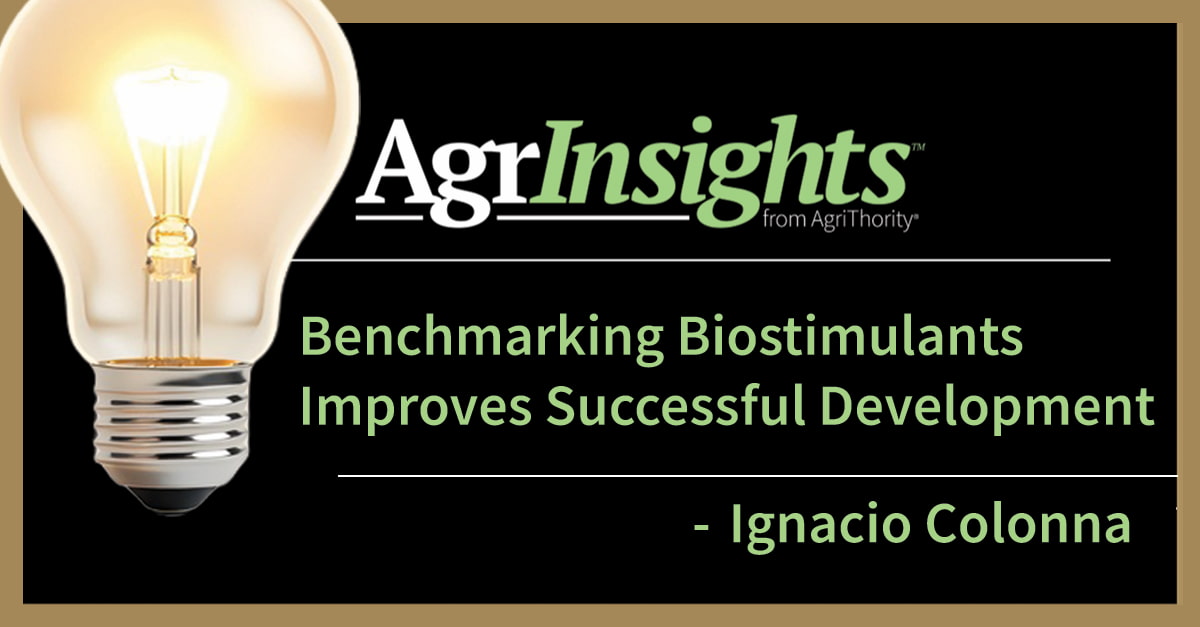Conventional chemistry is very sophisticated. Years of perfecting formulations and delivery systems have led to the paradigms we see in agriculture today. As this next level of innovation and the adoption of biological products expands, are the formulations and application methods advancing as well? For biologicals to be as effective as they can be and to be adopted on a larger scale, new delivery systems may have to be considered.
Conventional Chemistry Delivery Systems
Conventional chemistries are generally used in three ways:
- Broadcast—soil applied
- Foliar
- Seed treatment
Broadcast applications have traditionally been used as an effective and convenient method for growers, but precision spraying has been growing in popularity to combat resistance and to reduce the amount of chemical used. Foliar applications are used to give the plants an extra boost in the growing season. Tank mixing is well adopted to help growers save time and investment with less passes in the field.
Of more than 250 biologicals in seven categories, the application methods ranged from 42% seed applied, 36% soil applied and 23% foliar applied.

Opportunities in seed treatments have been plentiful and will continue to be as this application method is explored further for biologicals.
The challenge with both broadcast and foliar applied methods going forward are the consumer and health concerns, which is why seed treatment has continued to grow in popularity over the years. But, the challenge with seed treatments is the limited space on the physical seed. Layers can be added, but at some point, there’s a threshold that no other technology can be applied to seeds. There are some organizations conducting research to transform seed treatment and to allow more applications.
Biological Delivery Systems
Development of new technologies requires the right questions be answered in the right order. Biologicals work differently than conventional chemistry, so are current delivery systems set up for biologicals to succeed to their fullest potential? How can companies improve formulations and delivery systems to improve the impact of biologicals?
- Expand shelf life to two years at minimum.
- Determine effective application rates, timing and delivery methods that are the most effective for the biological. Consider equipment variables, nozzles and separate planter boxes as formulations are established.
- Make a plan for the biological technology that works with conventional chemistry. How can the microbials be protected from chemistry? How can biologicals be combined with chemistry without sacrificing effectiveness? What are the benefits of a total system approach, instead of just approaching individual inputs?
As Mick Messman of DPH Biologicals said in a CropLife article, “Biologicals are the right technology for the right time – now. As a recent study determined, farmers believe fertilizer, crop protection and labor are the top three areas of rising costs. These input costs are ranked by 80 percent of farmers in the study as the top risk to profitability. The finding from this study is that one-third of growers with 5,000 acres or more report they will purchase innovative equipment over the next two years. Small growers are more likely to invest in products to increase yields with 38 percent saying they will try new crop protection products.” More facts and findings are available from the McKinsey survey showing that growers are embracing new products and technologies to manage market unpredictability.
New Delivery Systems
 The medical field has been using biological products as vaccines, growth factors, immune modulators, monoclonal antibodies, as well as products derived from human blood and plasma for many years. In addition, there has been research into medical delivery systems like nanotechnology that could have a prevalent future in medicine. The agriculture industry can benefit from the life sciences commitments. One example is that four of the 10 Leaps by Bayer are focused on agriculture. For the agriculture industry, nanotechnology is making news as nanobiotechnology, nanofertilizers, nanobiofertilizers, nanoelements and nanoparticles.
The medical field has been using biological products as vaccines, growth factors, immune modulators, monoclonal antibodies, as well as products derived from human blood and plasma for many years. In addition, there has been research into medical delivery systems like nanotechnology that could have a prevalent future in medicine. The agriculture industry can benefit from the life sciences commitments. One example is that four of the 10 Leaps by Bayer are focused on agriculture. For the agriculture industry, nanotechnology is making news as nanobiotechnology, nanofertilizers, nanobiofertilizers, nanoelements and nanoparticles.
All these nanotechnology themes are presented in a book Nanotechnology for Agriculture: Crop Production & Protection. Conceptually this is a great option, but concerns range from toxicity to costs.
Microencapsulation can protect and accomplish slow release, but it can be cost prohibitive. And toxicity can become an issue with more economical options. However, there is a large frontier of knowledge that has yet to be tapped.
Seed applied technologies hold a strong position in smart precision agriculture. A fast, uniform and vigorous seed germination, emergence and plant establishment provide the best foundation and guarantee for a healthy crop ready to grow. Questions needing resolution include the formulations with low water solubility that create a challenge for uptake by the roots. Microplastic free coatings are now commercially available, and more are expected.
Encrustments for seeds are continuing to evolve as seed processors are developing drying capabilities for higher seed loading. Combining chemicals with biologicals is challenging due to the variation of microbes. Some are robust and resilient, others are not. Active ingredients around the seed often require moisture for proper uptake. Moisture around the seed may help restart or regrow the seed-applied microbes.
New planting mechanisms include “seed tapes” for perfect spacing and depth for smaller seeds as well as additional protection and stimulations through the tapes. Seed applied biostimulants, which can regulate genes up or down could have impact on germination and emergence.
Biological use opens a whole new world of possibilities and challenges to resolve, but the potential to learn from other fields like medical research could help move new delivery systems for biologicals forward faster. By focusing not only on the new biological technologies, but also focusing on the best ways to apply or use them, companies can set them up for success by creating new paradigms for growers.
When your Research is ready for Development, turn to AgriThority® for the scientific product, business and market expertise that can make the difference between a great idea and a breakthrough.



